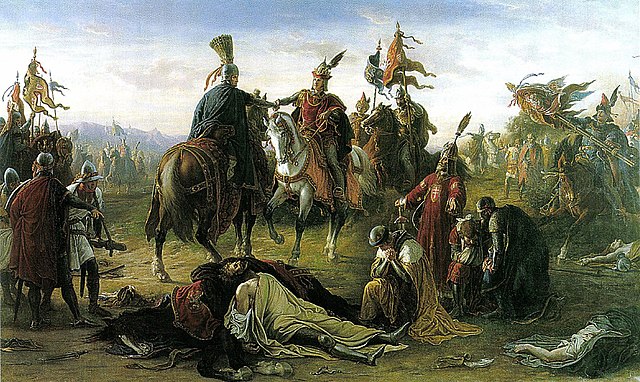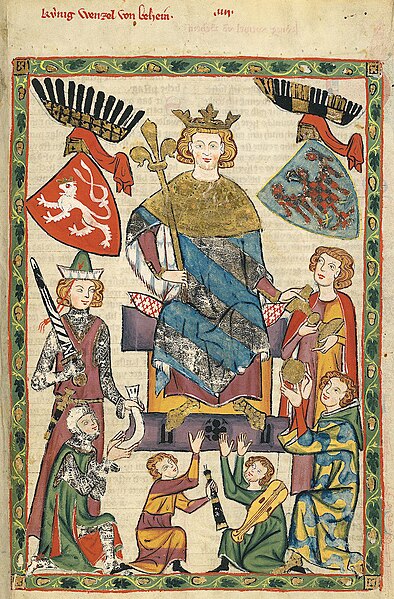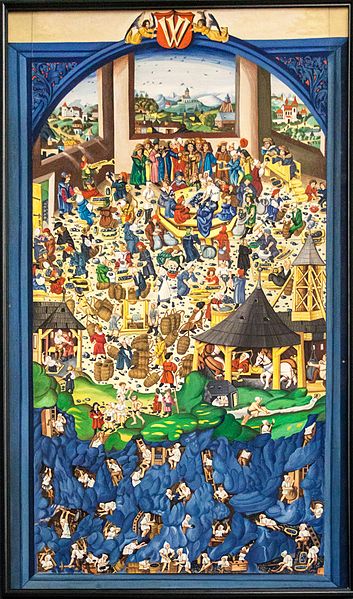The Battle on the Marchfeld ; Polish: Bitwa po Suchymi Krutami at Dürnkrut and Jedenspeigen took place on 26 August 1278 and was a decisive event for the history of Central Europe for the following centuries. The opponents were a Bohemian (Czech) army led by the Přemyslid king Ottokar II of Bohemia and the German army under the German king Rudolph I of Habsburg in alliance with King Ladislaus IV of Hungary. With 15,300 mounted troops, it was one of the largest cavalry battles in Central Europe during the Middle Ages. The Hungarian cavalry played a significant role in the outcome of the battle.
Meeting of King Ladislas IV of Hungary and Rudolph of Habsburg on the Battlefield of Marchfeld, painting by Mór Than, 1873
Ottokar's lands in 1272
Movements of the opposing forces prior to the battle (in German)
The ground was ideal for a cavalry battle
The Kingdom of Bohemia, sometimes referenced in English literature as the Czech Kingdom, was a medieval and early modern monarchy in Central Europe. It was the predecessor of the modern Czech Republic.
The oldest depiction of coat of arms of Bohemia, castle Gozzoburg in Krems (13th century)
Wenceslaus II as depicted in the Codex Manesse
Prague Castle, the ancient seat of Bohemian dukes and kings, Roman kings and emperors, and after 1918 the office of the Czechoslovak and Czech presidents
Kutná Hora, a medieval silver-mining centre, was once the second most important town of the kingdom.








